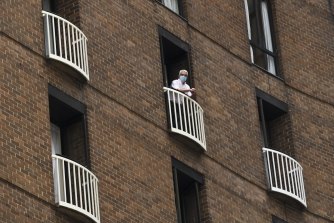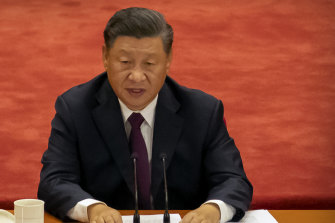WHOs Wuhan team fear time is short to find answers on virus origin
The team of international scientists who led the World Health Organisation’s mission to Wuhan say that without urgent action the source of the COVID-19 pandemic will never be known.
Crucial clues may be only months away from dissolving forever, the team fear. But the international scientific investigation has stalled amid politics and accusations.

Medical workers move a person who died from COVID-19 at a hospital in Wuhan in Febuary 2020, at the beginning of the pandemic.Credit:AP
In July, China rejected the World Health Organisation’s plan for the second phase of the investigation, in part because it included investigations into the “lab leak†theory.
That led to a war of words between China and other nations. Beijing slammed the “politicisation†of the investigation; the White House called China’s move “irresponsible and, frankly, dangerousâ€.
Meanwhile, the US has launched its own intelligence investigation of the “lab leak†hypothesis, despite the WHO’s investigators calling a leak “extremely unlikelyâ€, and China is pushing its own theory implicating the US Army.
Beijing’s relationship with Canberra and Washington is now at one of its lowest points in decades.
The international scientists who went into Wuhan in January on behalf of the WHO have watched this process play out with increasing concern, and on Thursday took to the Nature journal with an unusually strong warning: the whole process was close to collapse.
“The need to do this is high. We need to try to do it with pace,†said Professor Dominic Dwyer, a NSW government pathologist and member of the WHO team.
“The longer we delay, because of politics or arguments, the harder it is to get some of the information. When we went, that was already a year late. Now we’re going on 18 months. We still haven’t got to the next stage.
“Let’s put aside the political aspects, the posturing, and just get back to the science.â€

Dominic Dwyer was part of the World Health Organisation delegation who went to Wuhan; here, he waits in hotel quarantine in Sydney in Febuary. Credit:Rhett Wyman
The investigators are particularly concerned about waning antibody levels.
Animals or humans who carried the virus before it broke out in Wuhan probably carry telltale antibodies, which could be discovered with further investigation. However, the longer it takes to do the investigation, the greater the chance of those antibodies naturally disappearing.
“The window of opportunity for conducting this crucial inquiry is closing fast: any delay will render some of the studies biologically impossible,†the team writes in Nature.
Professor James Laurenceson, director of the Australia-China Relations Institute, said that Beijing believed the investigation into COVID-19’s origins was being used by America â€" with Australia as its ally â€" as a cudgel to attack China.

Chinese President Xi Jinping speaks during an event in September last year to honour some of those involved in China’s fight against COVID-19.Credit:AP
“China saw geopolitics at play as soon as the Trump administration tried to deflect its own incompetent handling on the virus response by attacking Beijing and pushing all sorts of theories without supporting evidence,†he said.
“[China] assessed that the [Australian] government was in cahoots with Washington and using COVID-19 as a geopolitical weapon to attack China.â€
Professor David Goodman, director of the China Studies Centre at the University of Sydney, said the way Australia had handled the call for an investigation into the origins of COVID-19 was “China for dummies stuffâ€.
“Had the Prime Minister gone about the task differently it is probable that there would have been a thorough investigation with [Chinese] co-operation,†he said. “Once the issue became so politicised by the PM’s open antagonism, the politics were lost.â€
The WHO’s original report, published in March, concluded there was “no definitive proof for or against†four proposed pathways for the virus to jump into humans: spillover from wild or farmed animals, consumption of contaminated food, or a lab leak.
However, spillover from an animal was considered the most plausible cause, and a lab leak “extremely unlikelyâ€. More evidence has since emerged showing the presence of live animals at one of Wuhan’s wet markets.
The investigative team are sharply critical of media reporting of the “lab leak†theory, which they argue suggests it is equally as likely as a natural origin. The evidence does not support this view, the team write.
“Leading scientists working in virology and related fields are telling us that the emergence of another virus similar to SARS-CoV-2 is not a matter of if but when, and likely this century,†a spokesman for the Australian Academy of Science said.
“This is where the resources of the international scientific community should be focused, with adequate support from their governments.â€
Liam Mannix’s Examine newsletter explains and analyses science with a rigorous focus on the evidence. Sign up to get it each week.
Liam Mannix is The Age and The Sydney Morning Herald's science reporter.
0 Response to "WHOs Wuhan team fear time is short to find answers on virus origin"
Post a Comment